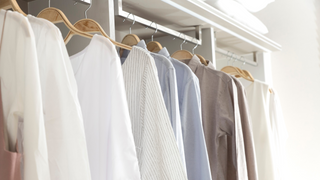Introduction to global trends in the trade of used clothing in second-hand stores
Fashion is a constantly changing field, and in recent years we have seen increasing interest in used clothing. Whether for economic, ecological reasons, or simply the desire to find unique, original clothes, second-hand stores are becoming more and more popular worldwide. In this article, we will take a closer look at global trends in this field, discovering new opportunities for sustainable fashion and unique bargains.
The growing popularity of second-hand stores
Factors influencing the growing interest in used clothing are diverse. Above all, more and more people appreciate the economic benefits associated with buying second-hand clothes. Used clothing is usually much cheaper than new, making it accessible to a wider range of consumers. Additionally, in times of economic crisis and rising prices, second-hand stores become an attractive alternative to expensive purchases in traditional shops.
An equally important factor is the growing ecological awareness of society. Producing new clothing involves high consumption of natural resources and waste generation. Buying second-hand clothes helps reduce the carbon footprint and contributes to more sustainable fashion. Consumers increasingly choose this option to limit their negative environmental impact.
Statistics and market data confirm this trend. According to reports, the global used clothing market is growing at a rate of about 15-20% annually, significantly outpacing the growth of the traditional clothing market. Forecasts indicate that by 2025, the global second-hand market value may reach as much as 77 billion dollars.
Ecological aspect - used clothing
One of the key aspects of the growing popularity of used clothing is its positive impact on the environment. Producing new clothes involves enormous water and energy consumption and greenhouse gas emissions. According to data, producing one cotton t-shirt consumes about 2700 liters of water.
Buying second-hand clothing helps avoid these negative effects. Extending the life of clothes through reuse reduces the demand for new production, thereby lessening environmental impact. Moreover, many second-hand stores engage in recycling and material reuse efforts, further aligning with the idea of sustainable fashion.
More and more consumers appreciate these ecological benefits and consciously choose used clothing as a way to reduce their carbon footprint. This trend drives the development of the entire industry, and fashion brands are increasingly engaging in sustainable fashion initiatives.
Trends in used clothing in different countries
Although interest in second-hand stores is visible worldwide, individual regions show certain specific trends and preferences. Let's take a closer look at a few examples.
Europe
The used clothing market in Europe is one of the most developed in the world. Countries such as Germany, the United Kingdom, and France have been actively operating in this industry for years. Both brick-and-mortar second-hand stores and online platforms offering a wide range of second-hand clothes are popular.
North America
The United States and Canada are other markets where used clothing is very popular. Americans often visit charity stores like Goodwill or Salvation Army, as well as use online second-hand sales platforms. This trend is gaining strength, especially among younger generations.
Asia
In Asia, we observe a somewhat different model of the used clothing market development. Local markets and fairs, where you can find unique vintage clothes, are popular there. Countries like Japan and South Korea have a long tradition in this area, and second-hand stores are highly regarded among fashion enthusiasts.
Other regions
Interest in used clothing is also growing in South America, Africa, and Australia. Although these markets are somewhat less developed than those in Europe or North America, local initiatives and e-commerce platforms are gradually gaining popularity.
Popular brands and styles in second-hand stores
Among the clothes available in second-hand stores, you can find real gems. Alongside classic, vintage styles, luxury brands and unique designs are increasingly appearing.
Vintage and retro
Fans of vintage and retro fashion eagerly visit second-hand stores in search of original, stylish clothes from past decades. You can find original shirts, dresses, coats, and accessories that give outfits a unique character.
Luxury brands
It happens that in second-hand stores you can come across clothes from famous, luxury brands at attractive prices. Customers look for such opportunities to complement their wardrobe with high-quality, branded items.
Unique and original designs
Besides well-known brands, second-hand stores are also an excellent place to discover unique, original designs. Often, you can find unique, handmade clothes or small, local brands offering one-of-a-kind creations.
Online platforms for buying used clothing
The development of technology and the growing popularity of e-commerce have also moved used clothing shopping online. Today, consumers have many global and local platforms at their disposal that facilitate access to second-hand fashion.
Global services
Leading global services like ThredUp, Depop and Poshmark enable the sale and purchase of used clothing on an international scale. They offer a wide range of products, intuitive interfaces, and secure transactions.
Local initiatives
Besides global players, local second-hand initiatives also appear on the market, focusing on the needs of specific communities. Such platforms often promote unique, regional brands and styles.
Mobile apps
The convenience of shopping for used clothing is also provided by dedicated mobile apps. They allow easy browsing of offers, convenient transactions, and home deliveries.
The impact of social media on trends in used clothing
It is impossible to overlook the role social media plays in popularizing used clothing. Platforms like Instagram, TikTok, and YouTube have become important channels through which consumers discover and get inspired by second-hand styles.
Influencers and content creators eagerly showcase their unique outfits made up of second-hand clothes. This way, they promote the idea of sustainable fashion and encourage followers to search for original gems in second-hand stores.
Social media has also become a platform for selling and exchanging used clothing. Consumers eagerly create their own profiles where they offer clothes they no longer need. This makes second-hand shopping even more accessible and convenient.
Challenges and opportunities for the used clothing industry
Although the used clothing market is developing dynamically, this industry also faces certain challenges. One of them is the need to ensure high quality and authenticity of the offered products. Consumers expect clothes to be in good condition, and sellers must ensure professional verification and presentation of the assortment.
Another challenge is the issue of logistics and distribution. Efficient order delivery, handling returns and complaints are key elements that determine customer satisfaction. Companies must invest in infrastructure development to meet the growing demand.
At the same time, the used clothing industry faces many development opportunities. Ongoing digitization and the popularity of e-commerce open new sales channels and ways to reach customers. Furthermore, growing ecological awareness among consumers supports further growth in interest in second-hand goods.
Innovative solutions are also emerging, such as clothing rental services or wardrobe exchange platforms, which fit into the idea of a circular economy. Companies that can adapt to these trends have a chance to succeed in the dynamically changing fashion market.
The future of the market - used clothing
The forecasts for the used clothing market in the coming years are very optimistic. It is expected that this trend will continue to gain popularity, and the value of the global second-hand market may reach as much as 77 billion dollars by 2025.
Technological innovations will play a key role in the further development of the industry. Advanced analytical systems, artificial intelligence, and Internet of Things solutions will allow for even better tailoring of the offer to consumer needs. Moreover, technologies such as blockchain can increase the transparency and security of transactions.
Equally important will be further strengthening ecological awareness among consumers. The popularization of the idea of sustainable fashion and responsible consumption will drive interest in used clothing. Companies that can effectively communicate their pro-ecological actions will gain a competitive advantage.
In summary, global trends in used clothing indicate a dynamic development of this industry. The growing popularity of second-hand stores, their positive impact on the environment, and the increasing availability of sales platforms make used clothing an attractive alternative to traditional fashion. It is worth following these changes and benefiting from them, both as consumers and entrepreneurs.




